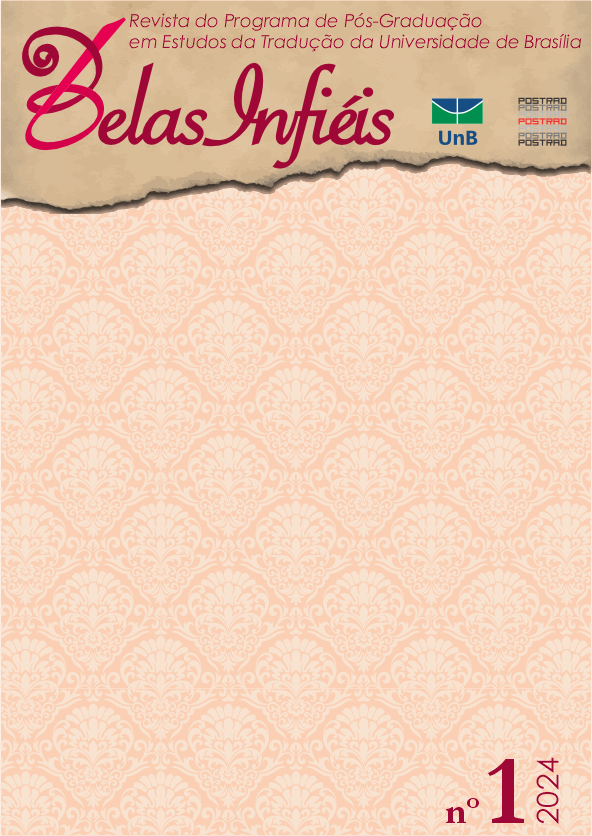Translating the écart Or Why Doesn’t Trust Fidelity
DOI:
https://doi.org/10.26512/belasinfieis.v13.n1.2024.51291Keywords:
Translating according to François Jullien. Dis- and Re- categorize. Écart and between. To assimilate and to disassimilate. Translating and otherness.Abstract
The French philosopher, Hellenist and sinologist François Jullien has developed a method to probe some of the western-European thinking key notions by adopting another perspective to examine them, the eastern-Chinese thinking. He proposes a way of “a concept’s dis- and re- categorization”. In other words, not to be restricted to any of these two ways of thinking, but to free oneself of one through the other, and thus allowing them to interpret each other. It is through such exercise that he approaches the translation. He elaborates his reflections on the matter availing himself of certain propositions developed and scattered throughout several of his books. The question he poses is: how translating, as well as the western-European thinking, can be renovated, and even modified, by translating a language which doesn’t belong to the Indo-European linguistic family, like the Chinese which, furthermore, is the only existing language whose writing is not phonetical, but ideographic. To answer this inquiry, he shudders some of the main Hellenist thinking notions which reverberates in what he calls “translation task” such as the categories of Aristotle and Kant, or even, Being, God, liberty etc. By criticizing expressions usually employed on the debate concerning translation, such as “loss”, “treason”, “fidelity”, “mourning”, “difference”, “equivalence”, “comparables”, Jullien illustrates his propositions with practical examples from the translation of Chinese to French and vice-versa He thinks of translation in terms of écart and between. Écart is the phenomenon responsible for opening a distance that brings forth to the between, the place where the Other – the source language and culture – are placed and held in relation. Translating occurs in this between open by the écart. To translate, according to Jullien, is firstly to assimilate and afterwards, disassimilate and, on the between, let go the Other, without obliterating the otherness. Briefly, écart and between promote sharing which is translation.
Downloads
References
Jullien, F. (2008). De l’universel, de l’uniforme, du commun et du dialogue entre les cultures. Fayard.
Downloads
Published
How to Cite
Issue
Section
License
Copyright (c) 2024 CC BY

This work is licensed under a Creative Commons Attribution 4.0 International License.
Given the public access to this journal, the texts are free to use but requires the recognition of the original authorship and initial publication in this journal to be properly stated.
 The journal allows the use of works published for non-commercial purposes, including the right to submit the work to publicly accessible databases. Published contributions are the sole and exclusive responsibility of the author(s).Â



















